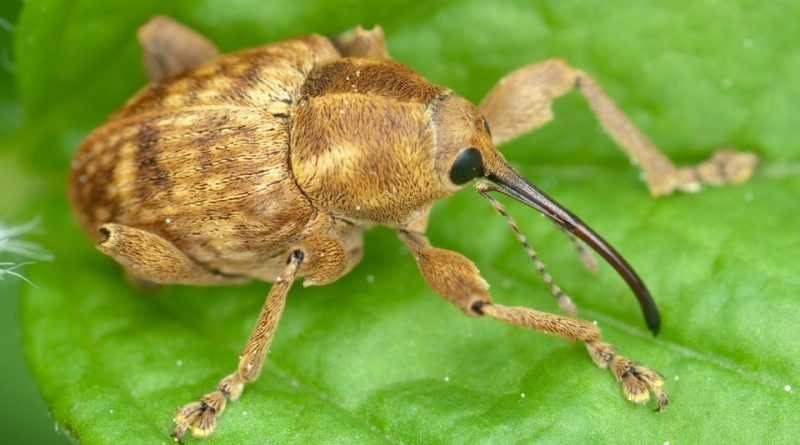Curculio nucum
Curculio nucum
The nut weevil (Curculio nucum Gyllenhaal, 1836) is a beetle belonging to the Curculionidae family.
Systematics –
From a systematic point of view, it belongs to the Eukaryota Domain, Animalia Kingdom, Subgenus Eumetazoa, Phylum Arthropoda, Subphylum Tracheata, Superclass Hexapoda, Class Insecta, Subclass Pterygota, Cohort Endopterygota, Superorder Oligoneoptera, Section Coleopteroidea, Coleoptera Order, Superfamily \ t Curculionoidea, Curculionidae family, Curculioninae subfamily, Curculionini tribe and therefore to the genus Curculio and to the C. nucum species.
Geographical Distribution and Habitat –
The Curculio nucum is a medium-sized beetle whose larvae develop in hazelnuts (Corylus avellana L., 1753) in various parts of the world. It is present in most of Europe, from southern Sweden, from Finland and from Great Britain to the Mediterranean.
Morphology –
The adult of the Curculio nucum has variable dimensions on average from 6 to 8.5 mm, without the rostrum.
This, in females, is very thin and can even reach the length of the body. In males, the rostrum is shorter.
The body of this insect is brown in color and is covered with a thick yellow-gray hair. The larvae are apode, fleshy and with an arched shape; whitish in color with hazelnut-colored head and prothorax.
Attitude and biological cycle –
The adults of the nut weevil appear in spring and during the summer they feed on the hazel plants. The larva develops inside the hazelnut. The mature larva drops to the ground and grows underground.
Specifically, this insect winters as a larva in the ground, at about 20 cm of depth. When the spring comes the larva grows wild and therefore, starting from the April-May period, there is the flicker of the adults. At this point the adults carry on the plant and actively begin to feed themselves, piercing young fruits and leaves.
Once sexual maturity is reached these insects mate; subsequently, towards the second half of May and June, the females lay their eggs.
Normally each female lays a single egg for each fruit, making a hole with the beak in the hazelnut. The larvae born after about 10 days, feed on devouring the seed; once it reaches maturity, after about 30 days, they leave the hazelnut falling to the ground by making a round exit hole; then they bury to winter. Some larvae can remain in the ground and flicker in the following years. Therefore, the nut weevil makes only one generation a year.
Ecological Role –
The activity of the adults of the Curculio nucum causes damage caused by the feeding galleries that occurs by pricking the leaves and practicing, with the rostrum, small holes in the fruits.
Hazelnuts so affected can mold; in any case there is an early drop. Subsequently the seeds are devoured by the larvae, born from the eggs laid inside the fruit. In the event of high infestations the losses can also be very large.
The main struggle must be the agronomic one which must consist above all in the implementation of practices that tend to reduce the potential of infestation such as:
– the collection and destruction of hazelnuts that fell early, which contain larvae;
– carry out frequent work on the land in order to disturb the wintering of the larvae and make them more vulnerable to the action of the climate and any natural enemies.
Although in past years the basic control was carried out then to the flicker of the adults, also with the help of insecticides (such as for example Methomyl, Thiacloprid or Deltamethrin) in the Countries that have the greatest production of hazelnuts, like Turkey, the Italy, France and Spain are working on alternative methods of control.
Some research suggests that it may be possible to use entomopathogenic nematodes such as Heterorhabditis indica, in addition to agronomic and agro-biological techniques. This nematode is lethal to the larvae that live in the ground under the trees. Another useful trick can be the use of Beauveria bassiana, a mushroom that can also be useful as a control agent. Research in Italy has shown that this fungus kills almost all the larvae when properly applied to the soil. However, this fungus should be applied when the larvae begin to pupate in the ground.
Guido Bissanti
Sources
– Wikipedia, the free encyclopedia.- Russo G., 1976. Agrarian Entomology. Special Part. Liguori Editore, Naples.- Tremblay E., 1997. Applied entomology. Liguori Editore, Naples.

